South Korean researchers have developed a wheel with variable stiffness and spoke system inspired by liquid droplets’ surface tension.
From Superinnovators 22/07/24
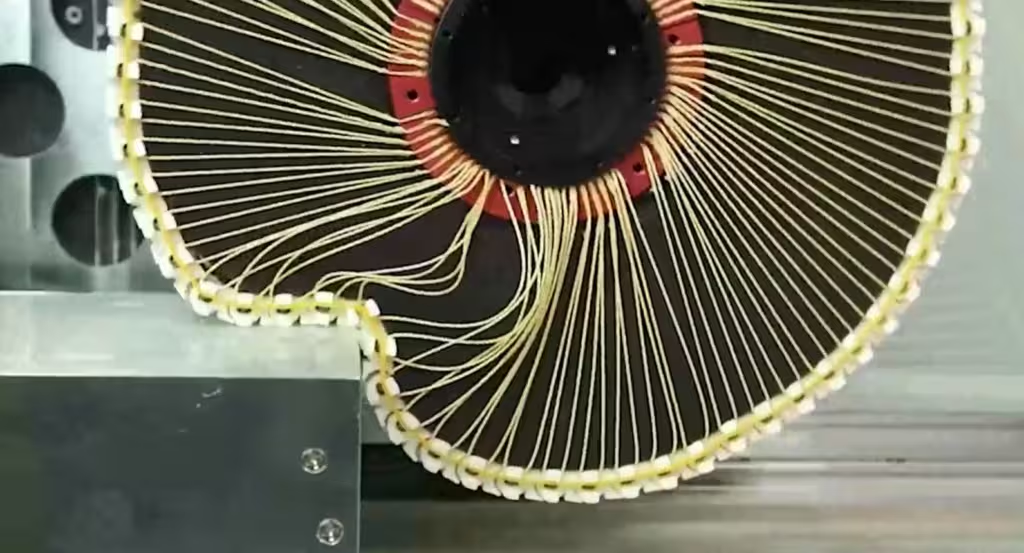
This innovative wheel can change between a rigid, circular shape and a soft, deformable form, adapting to different terrains, such as those encountered by wheelchair users or rovers on Mars or the Moon.
The wheel’s smart chain structure connects to a central hub via wire spokes, which adjust the tension to alter the wheel’s stiffness.
The wire spokes were made from Kevlar fiber with a thickness of 2 mm and a 3D printed honeycomb structure were used as a soft supporting structure.
On flat surfaces, the wheel remains rigid, allowing for faster movement.
When encountering obstacles, the wheel becomes softer, deforming to roll over them more easily.
This design was tested on both a two-wheeled self-balancing wheelchair and a four-wheeled electric cart.
The wheel successfully navigated obstacles 1.2 times its radius, demonstrating its adaptability in real-time.
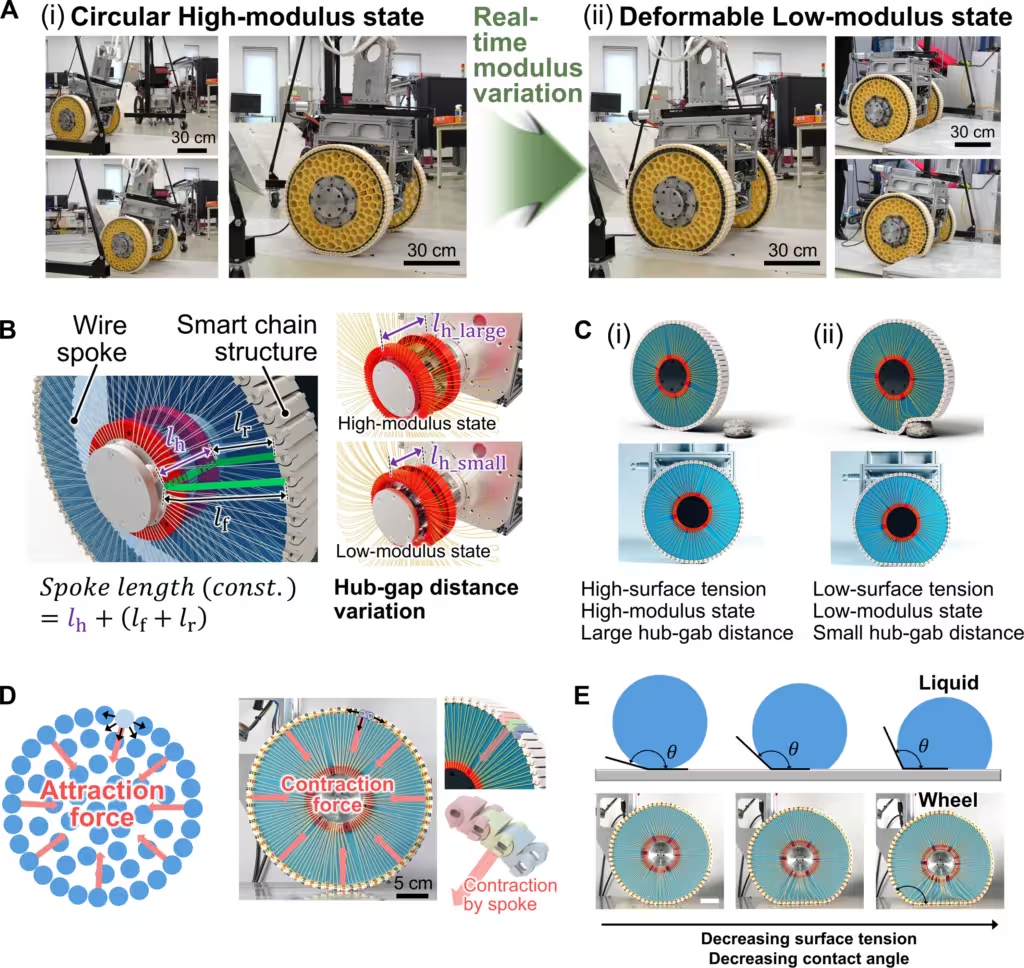
(A) Configuration of the soft supporting structure and the pin in the smart chain block. (B) Diagram of the simplified one-dimensional wheel model showing the effect of the length of the wire spoke. (C) Diagram of the simplified two-dimensional wheel model showing the effect of the length of the wire spoke. (D) Shape of the deformed wheel considering that the gravitational force depends on the hub-gap distance variation. (E) Measured length of the wire spoke at the deformed position from the ground based on the hub-gap distance variation. Error bars represent SD (n = 5). The deformation height of the wheel based on the hub-gap distance variation achieved with (F) a blue sponge or (G) a black sponge as the soft supporting structure. Error bars represent SD (n = 3). Credit: Jae-Young Lee et al, Science Robotics (2024)
However, the researchers noted some drawbacks including that dust and particles could enter between the smart chain blocks, potentially damaging the wheel.
Future improvements will include a wheel cover and using more durable materials like thermoplastic polyurethane.
Additionally, the wire spoke structure will be enhanced for better durability and reliability.
The team also plans to develop advanced simulations to predict the wheel’s deformation characteristics more accurately.
According to the researchers, these wheels could revolutionise mobility across varying environments.
The project was led by Jae-Young Lee of the Advanced Robotics Research Center in Daejeon, South Korea and the results were published in Science Robotics journal.
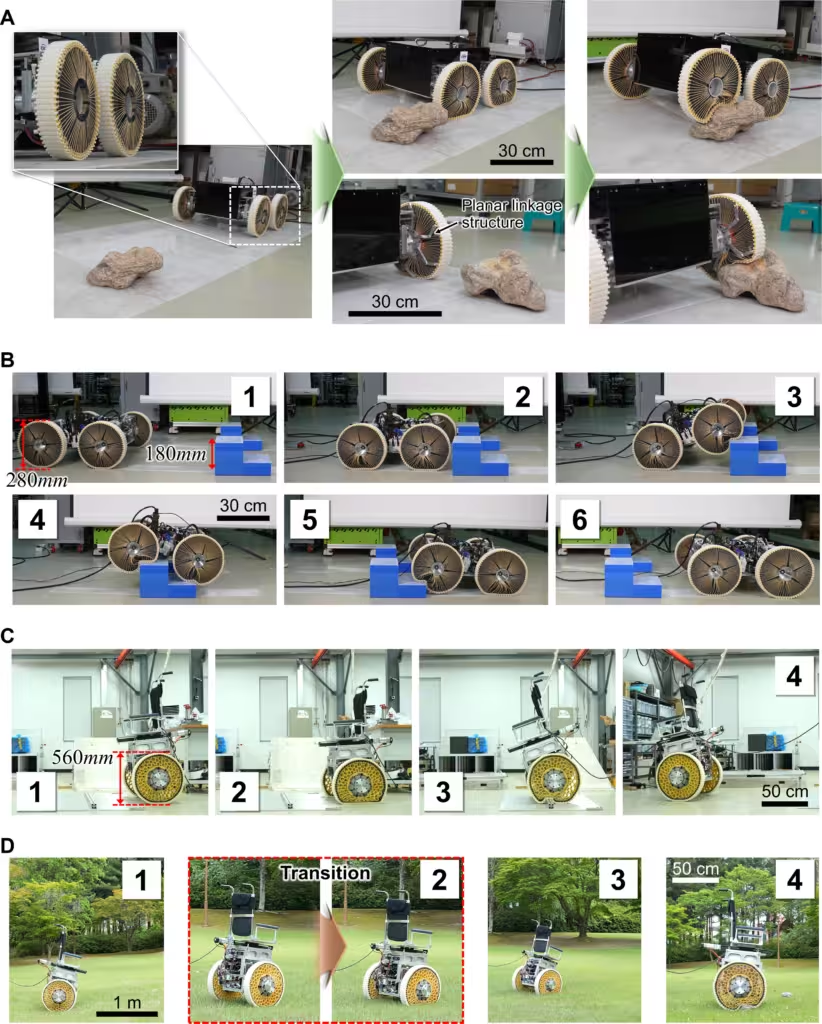
Demonstration of a four-wheeled vehicle overcoming a (A) rock and a (B) 180-mm step-shaped obstacle. Demonstration of a two-wheeled wheelchair system overcoming a (C) square obstacle and a (D) rock. Credit: Jae-Young Lee et al, Science Robotics (2024)
More info
You may also be curious about:
-
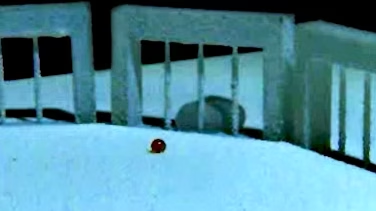
Particle-armoured liquid robot can pass through metal bars
-

Groundbreaking study uncovers how our brain learns
-

‘Eco-friendly’ plant-based plastics linked to organ damage
-

Cosmic twist: New study suggests the universe could be spinning
-

Your cells can hear
-

High blood pressure? Eat more bananas
-

Gut microbes transform bile to fight cancer
-

The body remembers: Oklahoma City bombing survivors’ have trauma ‘imprint’
-
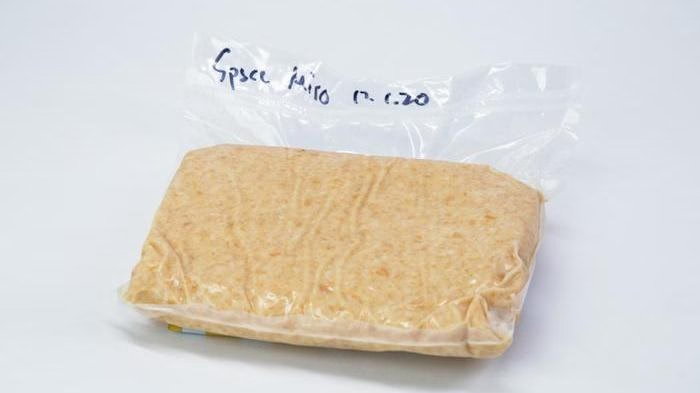
Miso made in space tastes nuttier, researchers find
-
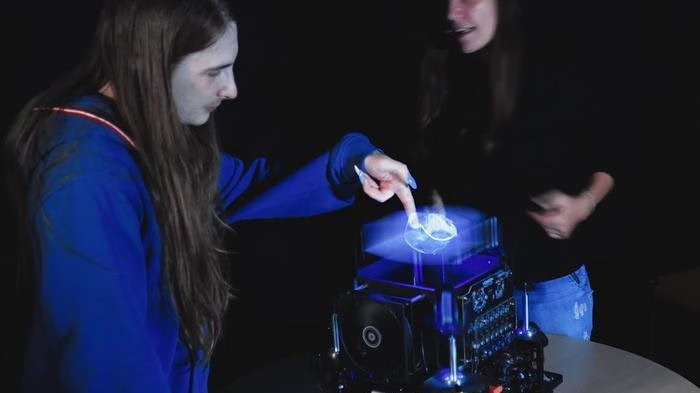
Elastic band holograms that can be grabbed and manipulated
-

Scientists find unique sound alleviates motion sickness
-
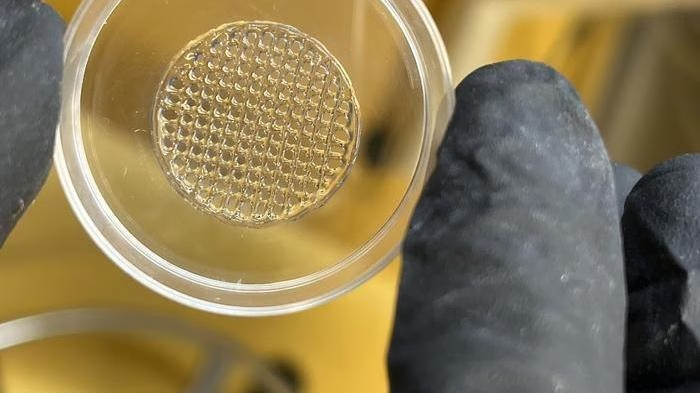
Printed skin to replace animal testing
